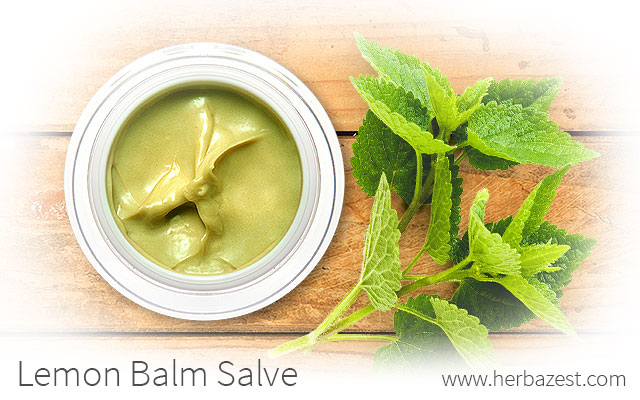Among other traditional herbal remedies, the salve has maintained its popularity for centuries. It is also referred to as ointment, which is just a different name for the same preparation. Making a lemon balm salve or lemon balm ointment at home requires few ingredients, is easy to do, and is very useful for topical treatments.
A salve or ointment contains liquid oils, solid fats, or both. Unlike a lemon balm cream, it doesn't include water. It has a characteristic oily texture that forms a thin, protective layer over the skin. Learn how to make lemon balm salve and see more about its medicinal applications.
How to Make Lemon Balm Salve
Salves or ointments can be more or less solid depending on the ingredients used. A solid and relatively grease-free salve or ointment spreads easily and is great as a lip balm. Conversely, less solid preparations have a looser texture and are better for the treatment of certain skin conditions, like rashes.
To make a solid lemon balm salve or lemon balm ointment, you will need:
- Fresh or dried and crushed lemon balm leaves
- Coconut oil
- Beeswax
Step by step process:
- Melt 140 g of beeswax in a double boiler. To emulate this, nest a glass bowl in a saucepan half filled with water that is already over minimum heat. The bowl should sit snuggly in the saucepan, but it shouldn't come in contact with the water.
- Once the wax is melted, stir in 120 g of coconut oil and the lemon balm leaves (280 g if fresh and 100 g if dried). Simmer gently for around 90 minutes.
- Remove from the heat and strain the mixture through a cloth.4. Pour into sterilized, dark glass jars. Tighten the lids and label the jars. Store in a cool, dark cabinet.
This preparation has a shelf life of three months. It can be used as a lemon balm lip balm.
To prepare a less solid salve or ointment of lemon balm, you will need:
- Fresh or dried and crushed lemon balm leaves
- Beeswax
- Olive oil
Step by step process:
- Melt 60 g of beeswax in a double boiler.
- Once the wax is melted, stir in two cups (500 mL) of olive oil and the lemon balm leaves (300 g if fresh and 120 g if dried).
- Remove from the heat. Cover the bowl and place it in a warm oven for three hours.
- Strain the mixture through a cloth and pour it in jars.
Benefits of Lemon Balm Salve
Since it is an oily preparation, the salve of lemon balm is not easily absorbed by the skin. It forms a thin, protective layer, which makes it a good remedy for the treatment of superficial skin issues, such as chapped lips, diaper rashes, and hemorrhoids. For topical treatment, apply a small amount three times a day on clean, unbroken skin and only onto the affected area.
Its easy preparation and storage, as well as its practical applications, make lemon balm salve or ointment a convenient home remedy that will fix common skin problems all year around.
Sources
- Ternopil State Medical University, Ukraine, Ointments. Characteristics and classification
- Encyclopedia of Herbal Medicine, p. 295




